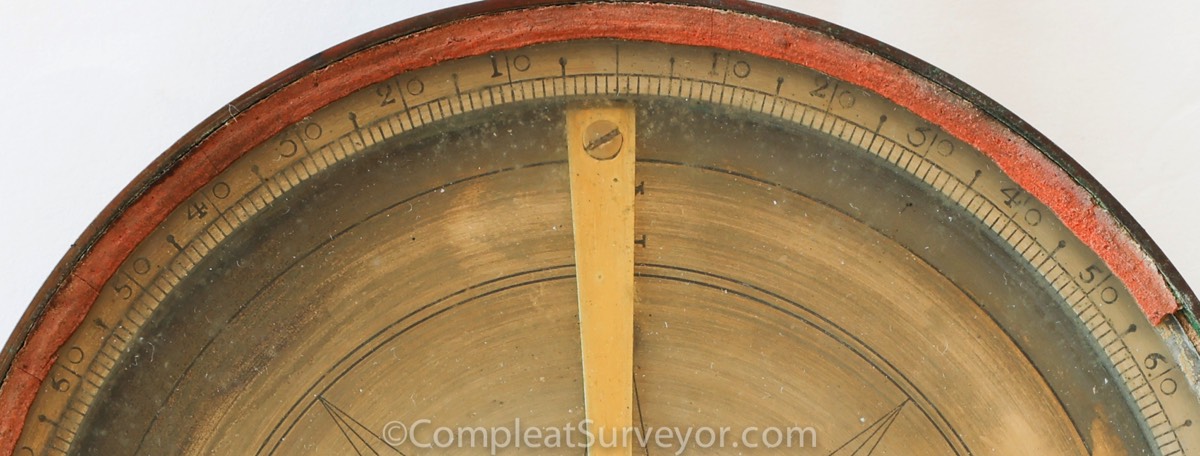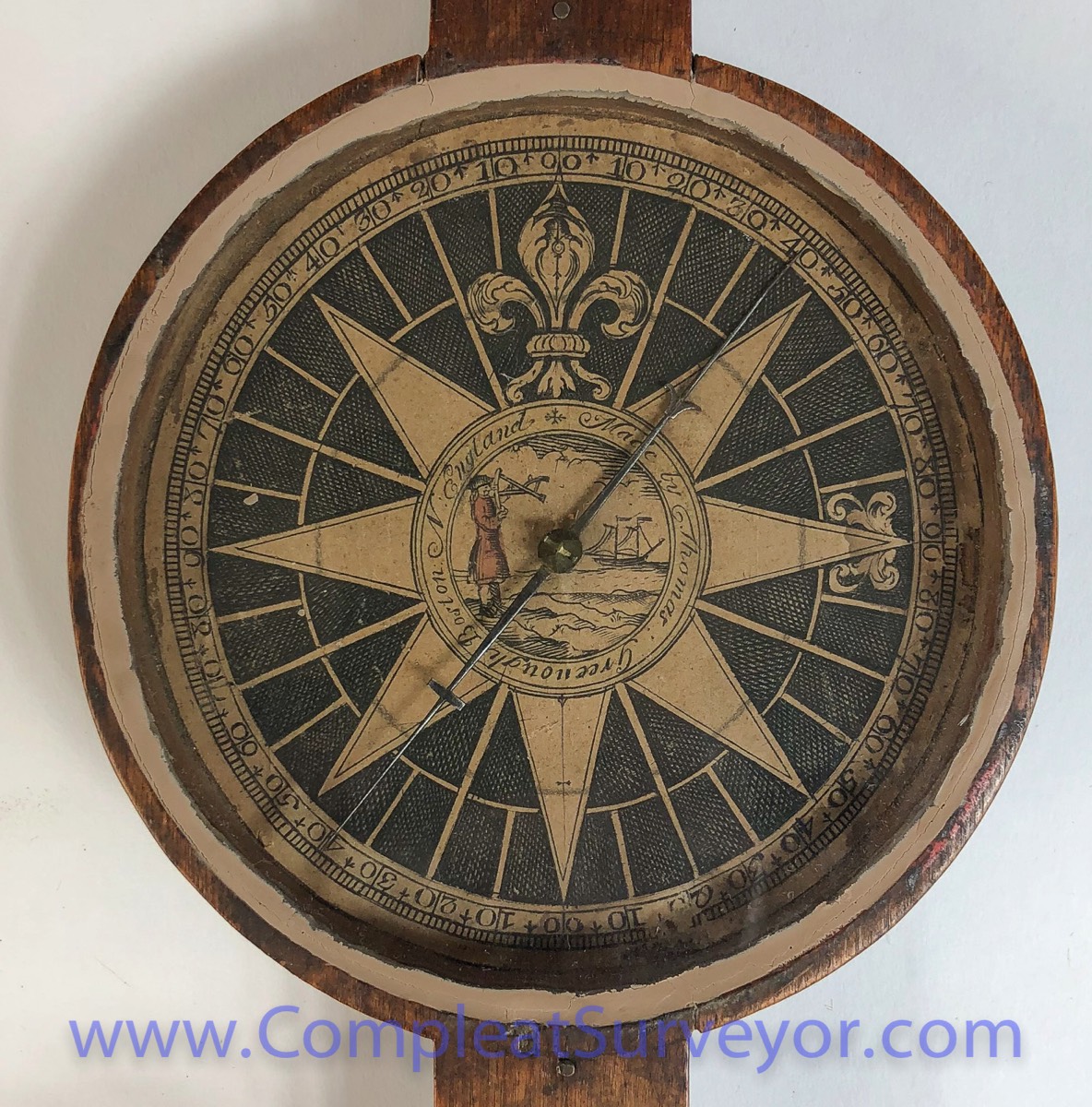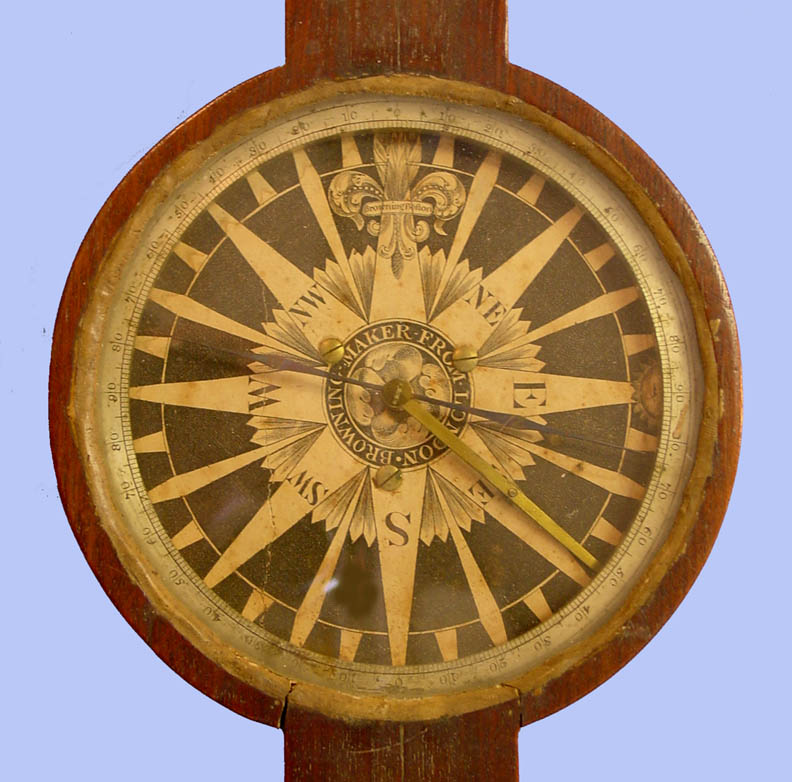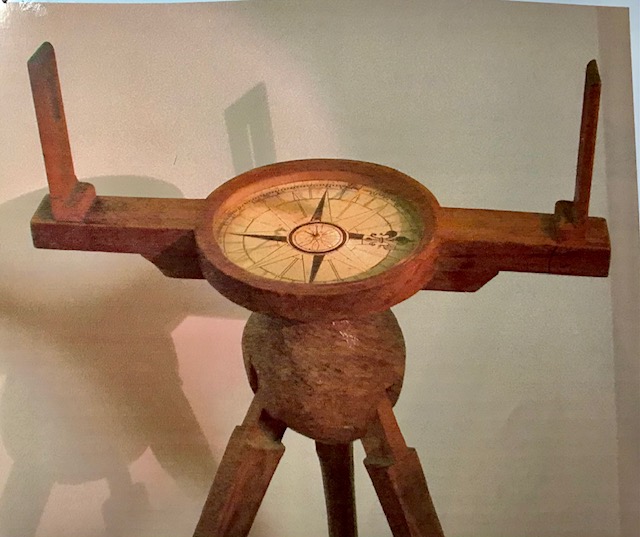
Wood Compass and Tripod - Unknown Maker
Colonial Wood Compasses
Wood Compasses are a wonderful surveying instrument to collect - they scream Colonial and Early American Surveying. Very few compasses were made out of wood after about 1830 or so.
The Conventional Wisdom says that many Colonials were compelled to make compasses out of wood instead of brass because the Brits limited the amount of brass that came into the colonies before the Revolutionary War. That's is likely true to some degree, but I don't think that fully explains why many colonials made compasses out of wood.
Almost all of the wood compasses made by the colonials were made in the New England States, like Massachussetts. Very few wood compasses were made outside of New England, on the other hand. Nobody has ever seen a wood compass made by a PA based maker, for example. Thus, there seemed to be plenty of brass available outside of New England to satisfy the demand for surveying compasses. Maybe the makers outside of the New England could acquire brass at cheaper prices given the proximity to large relatively high density cities like Philadelphia and NY, where there was a lot more used brass available.
Bedini's landmark work on "Early American Scientific ) Instruments" (1964 Bedini PDF) states that:
"But, from the technical point of view, it should be noted that those craftsmen who produced clocks and instruments and did not have their own brass foundries probably found that a good piece of straight-grained hardwood was as stable for holding its dimensions with the grain as a piece of brass. Shrinkage was at right angles to the grain; hence, for fixed linear stability wood was as good as brass. For rigidity per unit weight, wood was better than brass; and for availability and ease of working, wood was superior to brass….
It can be surmised, therefore, that surveying instruments, as well as instruments for other purposes, were produced in both brass and wood simultaneously by many of the New England makers in order to provide suitable instruments in a flexible price range to meet the demands of the trade…. As evidenced in the records of Daniel Burnap, for instance, it was possible to produce surveying compasses in brass in two grades, presumably one more elaborate than the other. Yet Burnap's prices ranged between six pounds and four pounds for the metal instruments, making them still well out of reach of many of the would-be surveyors. Accordingly, Burnap—and presumably numerous other instrument makers of the period—produced from wood an economy model that sold for not more than two pounds, thus placing the item within the reach of the nonprofessional surveyor.
This theory is supported amply by the discovery that several of the instrument makers who worked in brass also made instruments of wood during the same periods. In addition to the evidence in the records of Daniel Burnap, there are the surviving surveying instruments in brass and wood made by Samuel Thaxter, Thomas Greenough, and John Dupee, leaving little if any doubt that the reason for producing surveying compasses and similar items of wood during the 18th century was to satisfy the need for reasonably accurate yet inexpensive instruments."
Note that Bedini calls wood compasses "reasonably accurate" at the end of the quote. Nowhere else in the book does Bedini discuss the accuracy of wood compasses. I think brass compasses were unquestionably more accurate, perhaps much more accurate, than wood compasses made at the same time. Compare the two pics below, for example. Circa 1760 Greenough Wood Compass with a printed compass card on the left versus a Circa 1760 Aaron Miller Brass Compass with a divided brass ring on the right. As you can see, the degree divisions on the Miller are MUCH MORE even evenly spaced and readable than on the Greenough.
I suspect that the price of land in the Northeast did not justify using expensive brass compasses to survey the land more accurately. Wood Compasses were "good enough" given the value of land.
As the pics below demonstrate, over time wood compasses became more sophisticated and likely more accurate. Makers started offering hybrid wood - brass compasses, with the hybrids offering levels, verniers, and even graduated rings made out of brass. But even with the increased sophistication of hybrids, ultimately wood compasses could not compete with the accuracy and durability of brass compasses.
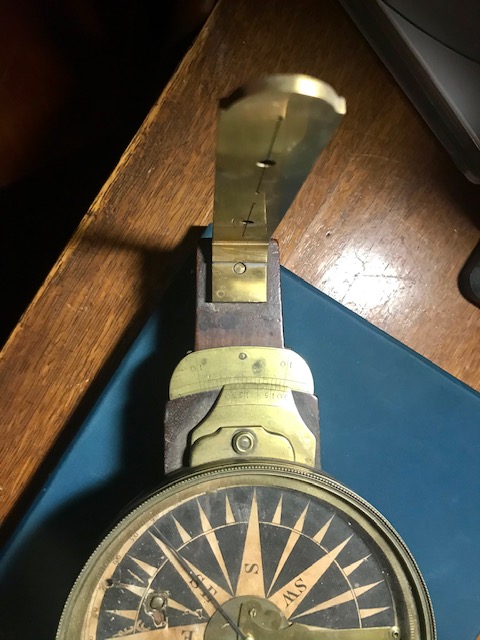
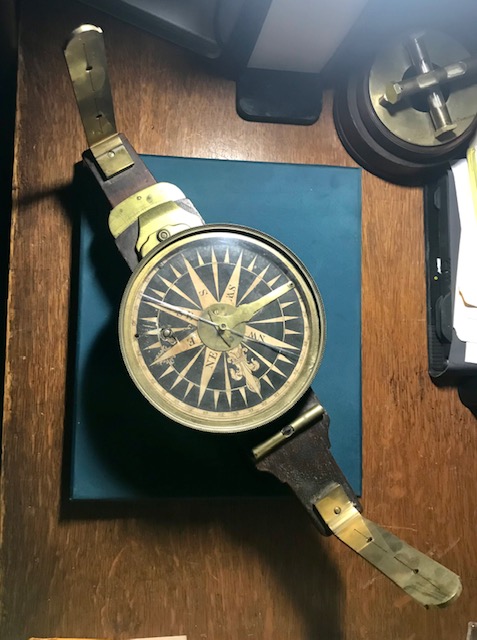
© 2020 Russ Uzes/Contact Me

